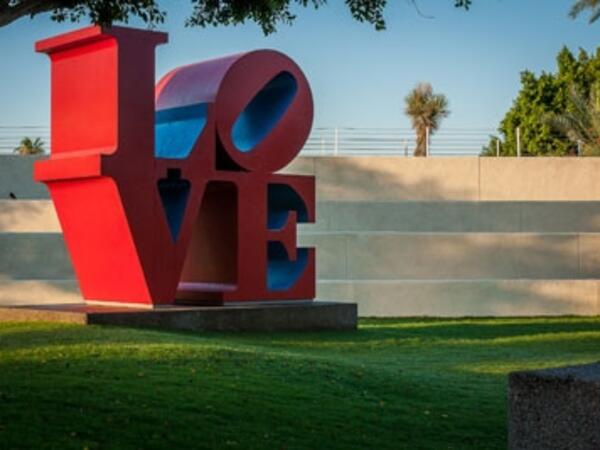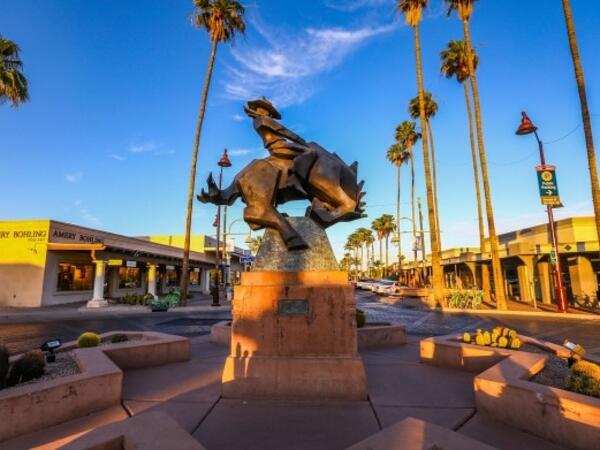
Water Conservation with Land Classification Tools: City of Scottsdale
The Arizona State University (ASU) Smart City Cloud Innovation Center (CIC) powered by Amazon Web Services (AWS) recently collaborated with the City of Scottsdale, Arizona, to apply Amazon’s Working Backwards Innovation process to help improve urban water conservation. Scottsdale is a rapidly growing city with a population of 250,000 and has one of the world’s most advanced water supply and treatment systems. Scottsdale’s long-standing focus on water conservation is based on the “necessity-of-life” in the desert climate of Arizona with extreme dryness and heat and perpetual drought conditions.
The City Water Conservation Department works closely with commercial and residential property owners to calculate water budgets to help property owners better understand and manage their water use.
Problem
Today the Water Conservation Department staff has to physically visit each property to identify landscaping elements such as grass, trees, bushes, and water features so that they can accurately calculate the water budget. These visits are time consuming and can vary in accuracy and process from year to year and from staffer to staffer.
The Department sought a solution to classify landscape features in a faster, more accurate way so they could spend less time on administrative and logistical tasks associated with data collection and analysis. Ideally, this would leave more time to focus on the programmatic priority of working with those properties that could most benefit from water conservation efforts. The City believed such a tool would support a significant increase in more informed property owners and corresponding reductions in outdoor water use.
Approach
The City of Scottsdale not only has a world-class Water Department but also advanced Information Technology and Geographic Information Systems Departments. Collectively, the City was working to identify potential technology solutions to support the water conservation effort.
City Chief Information Officer, Brad Hartig, attended the kick-off event, in March 2019, for the ASU CIC and realizing the CIC could help, submitted an Innovation Challenge request.
The ASU CIC brought key City stakeholders together and used the AWS Working Backwards process to facilitate an Innovation Workshop. At the workshop, three key innovation artifacts were developed: a mock press release; a Frequently-Asked-Questions document; and a visual representation of the proposed solutions.
Using the Working Backwards process, the workshop participants envisioned a solution that combined satellite imagery with GIS layers, such as parcel maps, with machine learning and object detection to identify the presence of landscape features. The City believes this solution will help the key customer—the City Water Conservation Department staff—reduce outdoor water use through more targeted outreach to high-use properties.
As part of the ASU CIC process, the team continued their engagement with a Solution Workshop that dove into the specific technical requirements that would be needed to build a Proof of Concept (POC). During the workshop, we assessed the data that would be needed, the AWS services that should be used, and a path forward to build out a POC.
Supporting Artifacts
The Amazon Working Backwards process produces three artifacts: a press release, a list of Frequently Asked Questions, and a visual depiction of the user experience. You can find the Scottsdale artifacts here:
| Press Release and FAQ | |
| Visual | |
| scottsdale_water.docx | Scottsdale Script Code |
Next Steps
The project team, consisting of ASU interns, AWS solutions architects, and City technology staff, completed the development of the prototype and have published it on the ASU CIC website. The solution is available to use in other communities as open source information.
About the ASU CIC
The ASU Smart Cities Cloud Innovation Center (CIC) is a strategic relationship with Amazon Web Services (AWS) and is supported by AWS on ASU’s Innovation campus - SkySong. The mission of the CIC is to drive Innovation Challenges that materially benefit the greater Phoenix metro area and beyond. The CIC will do this by solving pressing community and regional challenges, using shareable and repeatable technology solutions from ideation through prototype, as a service for the greater human good.
The CIC also provides real-world problem-solving experiences to students by immersing them in the application of proven innovation methods in combination with the latest technologies to solve important challenges in the public sector.
The challenges being addressed cover a wide variety of topics including homelessness, water conservation, vandalism, pedestrian safety, digital service delivery and many others. The CIC leverages the deep subject matter expertise of government, education and non-profit organizations to clearly understand the customers affected by public sector challenges and develops solutions that meet the customer needs.
For more information on the ASU CIC, to read about projects or to submit a challenge, please visit https://smartchallenges.asu.edu.
Photos


